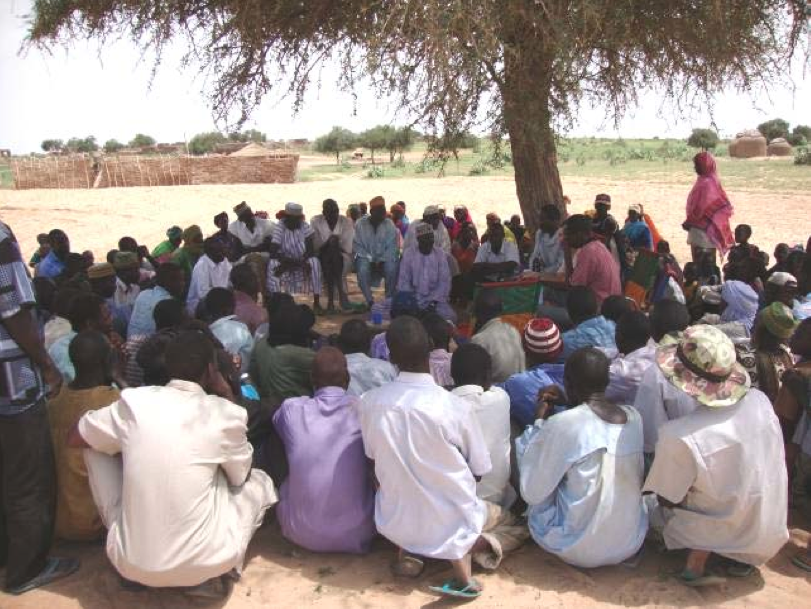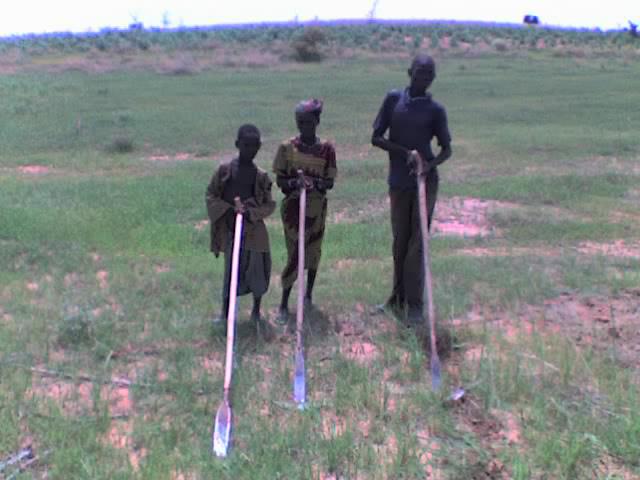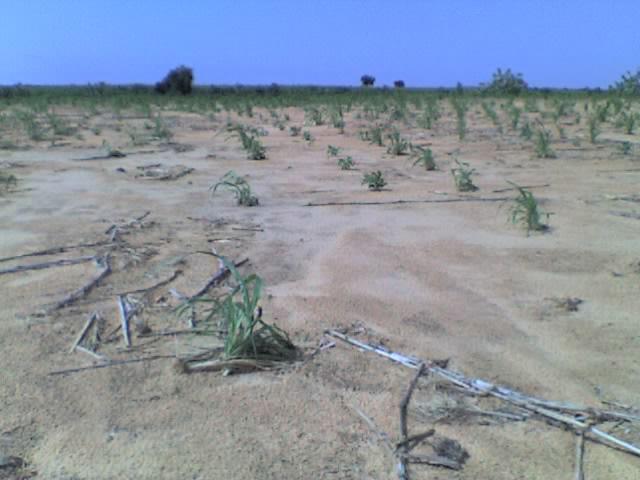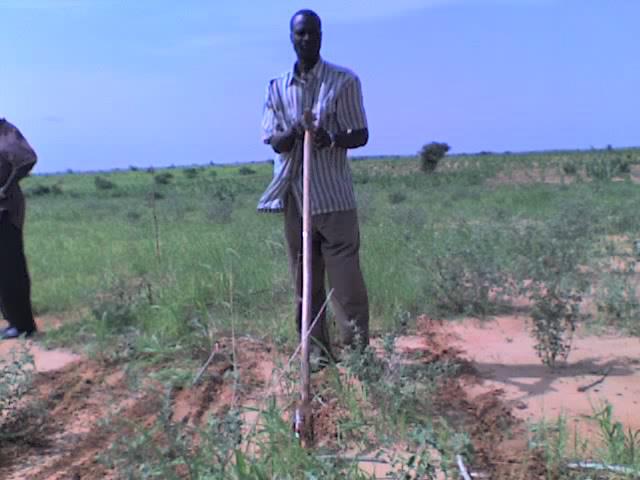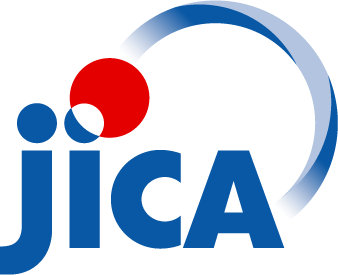CBA Niger: Developing Sustainable Agricultural Techniques for Adaptation in Roumbou Municipality, Dakoro (CEB)
Project Overview
Niger’s villages of Maïkoulaké, Atoulé and Roumbou are in a fragile intermediate eco-zone. Although they are near the Tarka Valley (one of the nation's few remaining fertile areas), the villages (pop. 1,600) are at risk as the semi-arid Sahel zone expands. These agro-pastoral communities depend largely on natural resources for their livelihoods. This leaves them highly vulnerable to natural and economic shocks, as well as climate change.
This Community-Based Adaptation project develops livelihood practices that increase local community resilience in the face of climate change. Through a community-based development approach that fosters grassroots ownership and local decision-making, the project bolsters the adaptive capacity of local communities through trainings in sustainable farming techniques, improved soil fertilization techniques, dune fixation, and natural regeneration.
* This project is part of Niger's Community-Based Adaptation portfolio. *
Project Details
This Community-Based Adaptation project works with three villages of agro-pastoralists in Niger’s Sahel zone. Together, the three villages number approximately 1,600 people. These communities are faced with high levels of poverty and structural food insecurity, which is exacerbated by soil degradation, dune mobilization and deforestation. Increasing levels of poverty have led local people to seek livelihoods by selling crop residues and wood cut from the Tarka valley – exacerbating soil degradation and thereby exacerbating poverty.
Furthermore, rainfall has declined by about 100mm in this region since the late 1960’s, from an average of about 400mm per year to about 300mm per year during the present decade. Ongoing climate change impacts will add to these pressures, increasing annual average aridity through increases in average temperature and evapotranspiration. In addition to changes in long-term average conditions, climate change is expected to increase the magnitude of inter-annual climate variability in the region. As climate conditions for agriculture and pastoralism worsen, crop failures are likely to increase—absent adaptation. These are likely to lead to maladaptive coping strategies, including deforestation for the sale of fuelwood, which will increase erosion. This will in turn decrease the fertility of the area and make crop failure increasingly likely – fueling a cycle of poverty, vulnerability and land degradation that is propelled by the impacts of climate change.
By restoring land and building capacity to sustainably farm it in a climate-resilient manner, the project will decrease the climate change threat facing land resources in the focal region. In response, the UNDP CBA project will build the capacity of the community to engage in livelihood practices that will contribute to the reduction of climate change-driven soil erosion pressures. Along with co-financing, measures will be piloted to restore degraded land by 25 hectares of degraded land restored, including 5 hectares of dunes. In addition, community members will be trained to implement and monitor land reclamation practices.
The CBA project also fund activities to reduce deforestation and increase sustainability in the face of long-term climate change pressures by decreasing exploitation of natural ecosystems and replacing extensive agricultural practices with intensive ones. This will be achieved by instituting a community-managed bank of agricultural inputs, a pilot demonstration of quick-maturing seeds, training for 15 community-level “brigadiers” to disseminate identified best practices in climate resilient agriculture locally, and by providing agricultural implements to the most vulnerable households (less than 10 households, who would otherwise be forced to subsist on clime-stressed ecosystems). Lastly, lessons learned from project implementation will be integrated into local-level planning.
Key Results and Outputs
• Promotion of sustainable farming techniques that enhance yields while helping regenerate soil
• Demonstration of quick-maturing varieties of local staple crops and testing of crops in experimental plots
• Training of farmers in techniques that improve soil fertilization, dune fixation, and natural regeneration; encouragement of farmers to further disseminate adaptive techniques by training their peers
• Creation of a community-managed bank of agricultural inputs, such as fertilizers and pesticides, to make farming inputs, techniques, training, and support easily accessible
• Provision of animal-drawn plows and farming inputs to households whose adaptive capacity is lowest so they are able to farm more productively and reduce practices that aggravate deforestation and land degradation, such as wood-cutting and farming on fragile lands
Reports and Publications
Brochures, Posters, Communications Products
Annual Reports
Project Brief / Fact Sheet
Monitoring and Evaluation
Monitoring and evaluation for community-based adaptation is a new field, and the CBA project is piloting innovative approaches to evaluating the success of locally-driven adaptation projects, and generating lessons to inform ongoing practice.
Key considerations in M&E for CBA include:
- Grounding M&E in the local context: M&E for CBA should avoid overly rigid frameworks, recognizing community heterogeneity and maintaining local relevance
- Capturing global lessons from local projects: CBA projects are highly contextualized, but lessons generated should be relevant to stakeholders globally
- Incorporation of both quantitative and qualitative indicators: to ground projects in tangible changes that can be objectively evaluated, and to capture lessons and case studies for global dissemination
To these ends, the CBA project uses three indicator systems: the Vulnerability Reduction Assessment, the Small Grants Programme Impact Assessment System, and the UNDP Climate Change Adaptation Indicator Framework.
The Vulnerability Reduction Assessment (VRA)
The VRA is a question-based approach with the following aims:
- To make M&E responsive to community priorities
- To use M&E to make projects more accountable to local priorities
- To make M&E capture community ideas and local knowledge
- To gather community-level feedback to guide ongoing project management
- To generate qualitative information
- To capture lessons on specific issues within community-based adaptation
- To generate case studies highlighting adaptation projects
The VRA follows UNDP's Adaptation Policy Framework, and is measured in a series of meetings with local community stakeholders. In these meetings, locally-tailored questions based on standard VRA questions/indicators are posed, and the community assigns a numerical score on a 1-10 scale for each question. Progress is evaluated through changes in scores over the course of implementation, as well as through qualitative data collected in community discussions surrounding the exercise.
UNDP has developed a Users Guide to the VRA (Espanol) (Francais) as a tool to assist practitioners to conceptualize and execute VRA measurements in the context of CBA projects.
The SGP Impact Assessment System (IAS)
The CBA, being a project of the GEF Strategic Priority on Adaptation, aims to increase the resilience of ecosystems and communities to the impacts of climate change, generating global environmental benefits, and increasing their resilience in the face of climate change impacts. To this end, the CBA projects use the SGP's impact assessment system for monitoring achievements in GEF focal areas (focusing primarily on biodiversity and sustainable land management).
The IAS is composed of a number of quantitative indicators which track biophysical ecosystem indicators, as well as policy impact, capacity development and awareness-building.
UNDP Climate Change Adaptation Indicator Framework
CBA projects also track quantitative indicators from UNDP's adaptation indicator framework, corresponding to the thematic area on natural resources management. More information on UNDP's indicator framework can be found on the UNDP climate change adaptation monitoring and evaluation website.
* This description applies to all projects implemented through UNDP's Community-Based Adaptation programme. Specific details on this project's M&E will be included here as they become available. *
